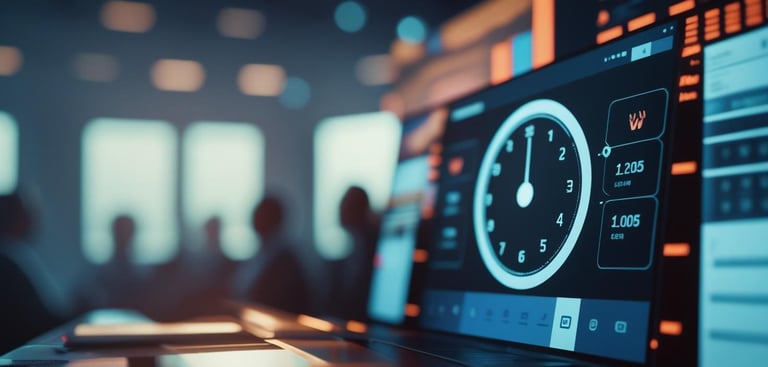Start sending invites for free - no card required - Click here
Structuring Live Events with Countdown Timers: A Guide for Hosts and Speakers
Every event organizer has faced the challenge of keeping sessions on schedule, especially when dealing with multiple speakers or segments. A few extra minutes here or there can ripple into delays across the entire agenda. One of the simplest and most effective ways to prevent this is by incorporating countdown timers into the session flow.
BLOGS
7/23/20252 min read


Every event organizer has faced the challenge of keeping sessions on schedule, especially when dealing with multiple speakers or segments. A few extra minutes here or there can ripple into delays across the entire agenda. One of the simplest and most effective ways to prevent this is by incorporating countdown timers into the session flow.
1. Why Time Matters More Than Ever
Modern events, especially virtual ones leave very little margin for error. Sessions that run overtime can lose attendees, disrupt panel transitions, and reduce the time for audience interaction. A countdown timer for sessions helps avoid these pitfalls and delivers a structured experience.
2. Speakers Need Support Too
No matter how experienced a presenter is, speaking within strict time limits can be difficult. A countdown timer for presenters can serve as a subtle visual cue that helps them stay aware of their pace. This ensures that they cover key messages without feeling rushed at the end.
3. Helping Webinars Start Strong
Webinars often begin with a holding screen or a warm-up. Using a countdown timer for webinar start times keeps the host and participants synchronized. It also builds anticipation and allows time for last-minute tech checks.
4. Smooth Backstage Coordination
Behind every seamless event is a team managing time across multiple segments. Using a countdown timer for stage helps stage managers, MCs, and tech staff coordinate transitions, cue next speakers, and wrap up segments gracefully.
5. Enhancing the Attendee Experience
Audience attention spans are short. Events that stick to time feel more professional and respect the audience's schedule. By using countdown timer for speakers during keynotes or panel discussions, you create more focused, engaging, and predictable sessions.
6. Best Practices for Effective Timer Use
Plan timers for different segments intro, body, wrap-up.
Keep them visible but non-intrusive.
Use final-minute visual or sound alerts to signal wrap-up.
7. When to Avoid Timers
In informal, creative sessions (like brainstorming or casual chats), rigid timers may feel restrictive. In such cases, use soft timing cues instead of hard stops.
Conclusion
Countdown timers offer structure in what can easily become chaotic event timelines. Whether you're planning a countdown timer for sessions or guiding a speaker with a subtle timer for speakers, these tools make timing more intentional. In the end, the best sessions aren't just well-delivered—they're well-timed.
BulkCalendar.in
Send Bulk & Mass Calendar Invites Instantly
Contact us
Engagement
sales@letscalendar.com
+44 (0) 203 916 5117
© 2025. All rights reserved.
Help?
